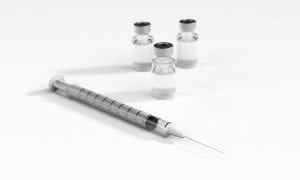Although the American College of Asthma, Allergy and Immunology (ACAAI) Annual Scientific Meeting has wrapped up for this year, there is still a ton to learn from the presentations given during the event. During the Meeting, Pharvaris presented two posters regarding their therapeutic candidate PHA121 for the treatment of hereditary angioedema (HAE). So far, Pharvaris has tested the candidate in healthy volunteers, which provided insight into its safety, tolerability, pharmacokinetics, and pharmacodynamics. You can find both poster presentations on the Pharvaris website.
PHA121
Developed by Pharvaris in line with their goal to create orally-administered bradykinin-B2-receptor antagonists, PHA121 is currently in clinical development. The therapy is designed to treat HAE. In a Phase 1 trial, which analyzed the therapy in healthy volunteers, PHA121 was shown to be potent, rapidly working, and well-tolerated. Next, Pharvaris looks to advance PHSV416, which is PHA121 in soft capsules.
During the ACAAI Meeting, Pharvaris presented two posters on PHA121 and the data sourced from the trial. In the first poster, researchers shared how PHA121 and its bradykinin response impacted cardiovascular health. 16 volunteers enrolled in the study. They received 12mg and 22mg PHA121. Through this, researchers watched sustained hemodynamic responses. Hemodynamic refers to blood flow, or the dynamics of blood flow as it moves through the body. PHA121 was shown to last longer, and sustain responses, compared to other treatment options such as icatibant.
Hereditary Angioedema (HAE)
Caused by gene mutations and defects on chromosome 11, hereditary angioedema is an inherited condition which causes intense and unexplained swelling beneath the skin. Typically, HAE symptoms occur in flares or attacks. Stress or injury can trigger these attacks. However, patients may experience flares even without triggers. While HAE affects males and females equally, females tend to be more symptomatic due to hormonal fluctuations. Patients have an estimated 14 flares, on average, each year.
Normally, we have a blood protein called C1-inhibitor which helps regulate bodily processes, fight illness, and even coagulate blood. But when C1-inhibitor is unable to perform these roles, thanks to the gene mutations, too much bradykinin builds up in the blood. As a result, blood vessels become swollen. When they leak fluid into body tissue, the body tissue also experiences inflammation. Symptoms include:
- Excessive swelling in the hands, legs, feet, toes, arms, and fingers
- Nausea and vomiting
- Abdominal pain and inflammation
- Swollen eyes, lips, cheeks, and eyelids
- Throat inflammation
- Difficulty breathing, which can be life-threatening or even fatal if untreated








